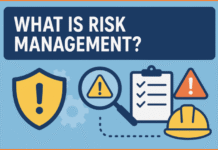Human error is an inevitable aspect of any task, particularly in high-risk industries such as nuclear power, aviation, and healthcare. The Technique for Human Error Rate Prediction (THERP) is a structured approach designed to estimate the probability of human errors in complex systems. This predictive method is used to improve safety and operational efficiency by analyzing tasks, identifying errors, and applying corrective measures.
Contents
Steps of THERP
1. Task Analysis
The first step in THERP is to break down a given task into smaller, manageable steps. Each step is evaluated based on:
- Likelihood of occurrence – How often the step occurs within the process.
- Severity of consequences – The potential impact of an error in this step.
- Complexity of execution – The difficulty level involved in completing the step correctly.
By deconstructing tasks in this way, THERP provides a clear view of where potential human errors may arise.
2. Identification of Errors
Human errors are classified into different types based on the HSG 48 framework:
- Skill-based errors – Errors due to lapses or slips, often occurring in routine tasks.
- Rule-based errors – Mistakes resulting from the incorrect application of a rule or procedure.
- Knowledge-based errors – Mistakes arising from lack of knowledge or incorrect decision-making in unfamiliar situations.
By identifying the types of errors that could occur, organizations can better understand the nature of human mistakes and address them effectively.
3. Fault Probability Assessment
Once errors have been identified, the next step is to estimate the probability of their occurrence. This assessment considers:
- Task complexity – The difficulty level and number of decision points within the task.
- Operator skill level – The experience and training of the individuals performing the task.
- Environmental factors – Work conditions such as noise, time pressure, distractions, or fatigue.
These factors contribute to an error probability estimate, allowing organizations to prioritize mitigation strategies based on the highest risk areas.
4. Error Reduction
The final step in THERP is implementing measures to reduce the likelihood of errors. Strategies include:
- Redesigning tasks to simplify execution.
- Enhancing operator training and competency development.
- Implementing fail-safes, automation, and error-proofing mechanisms.
- Optimizing work environments to minimize distractions and stressors.
By proactively addressing these factors, organizations can enhance safety, improve efficiency, and reduce the financial and operational costs associated with human errors.
THERP is a powerful tool for assessing and mitigating human errors in critical systems. By systematically analyzing tasks, identifying potential errors, estimating fault probabilities, and applying corrective actions, this approach helps organizations create safer and more reliable workflows. Whether applied in aviation, manufacturing, or healthcare, THERP remains a valuable methodology for improving human reliability and operational excellence.





